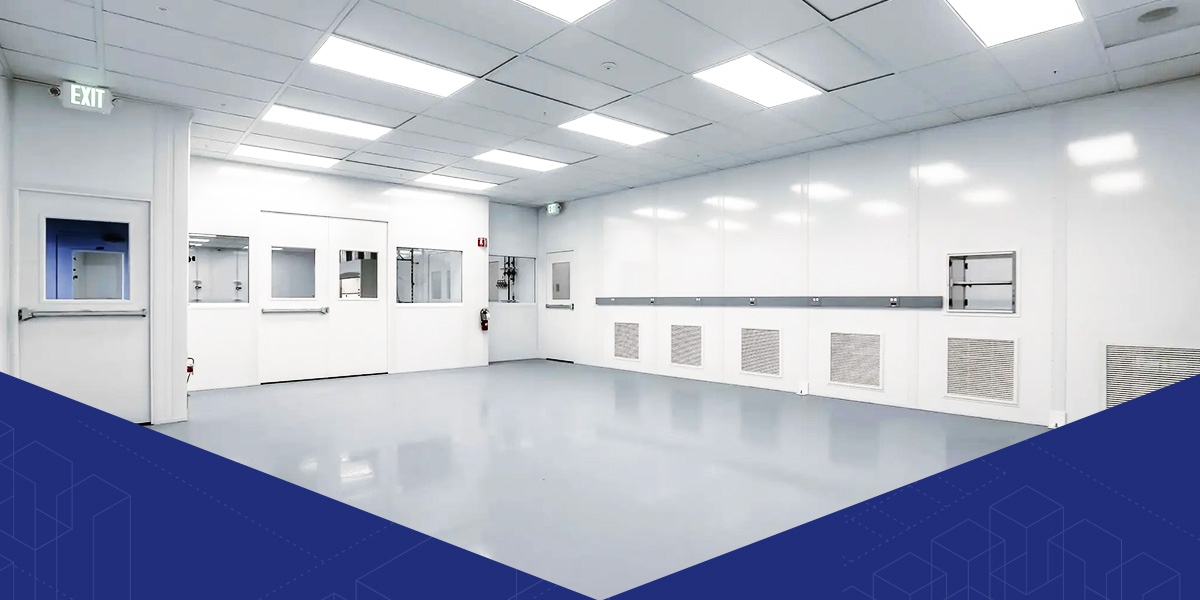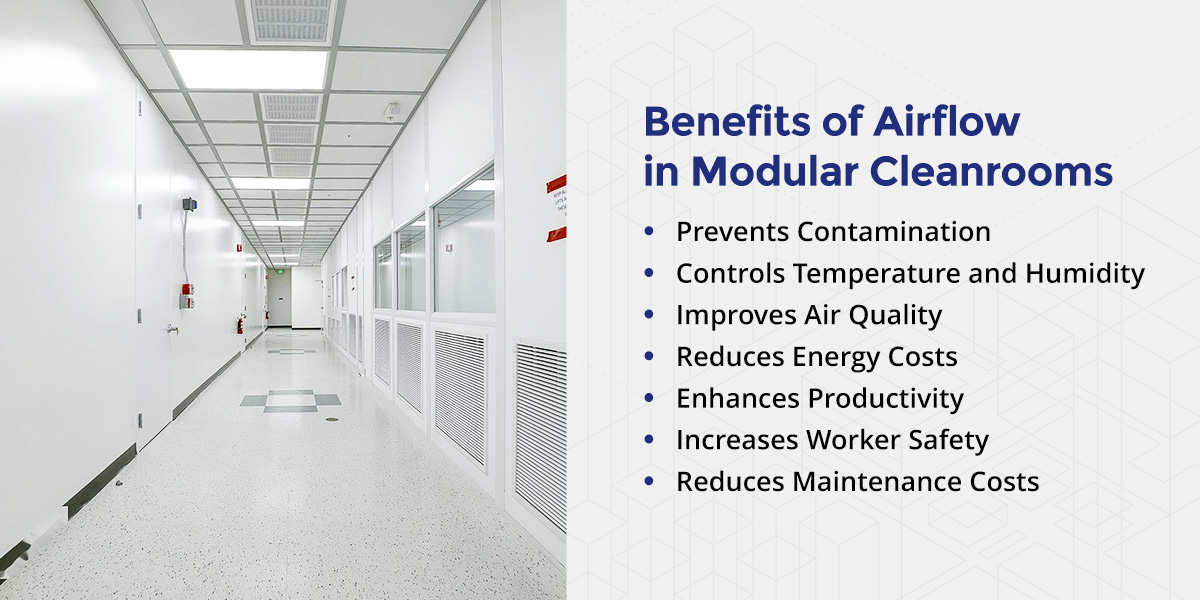


A cleanroom is a controlled environment where the concentration of airborne particles, such as dust, microbes, and other contaminants, is kept to a minimum to maintain the cleanliness of the area. The importance of airflow in a modular cleanroom cannot be overstated. Adequate airflow ensures the cleanroom is free of contaminants and maintains a safe and clean environment for personnel and products.
Insufficient airflow can lead to the accumulation of contaminants, creating an environment that can compromise product quality and the health of personnel. Maintaining a specific airflow pattern can help you achieve optimal air quality, enhance productivity, and reduce energy costs.
Airflow is an essential factor to consider when designing and operating a modular cleanroom. The airflow is designed to move contaminants away from the product, equipment, or personnel and into a filtration system that removes them from the room. The direction is determined based on the classification and purpose of the cleanroom.
There are three main types of airflow that modular cleanroom manufacturers implement:
Each type of airflow has advantages and disadvantages, and selecting the appropriate kind of airflow helps you achieve your desired level of cleanliness and contamination control in the cleanroom. The choice of airflow type depends on the application’s specific cleanroom airflow requirements.
Cleanrooms are classified by the level of cleanliness required using the International Organization for Standardization (ISO) 14644-1, ranging from ISO Class 1, or the fewest allowable particles, to ISO Class 9, or the most allowable particles.

Modular cleanrooms are an essential component of many industries that require a controlled environment to maintain the quality of their products. The airflow in a modular cleanroom is a crucial element that plays a vital role in ensuring the environment is held at the desired cleanliness level. Being modular does not reduce cleanliness in the room — these cleanrooms require proper design and construction by professional modular cleanroom manufacturers.
There are several benefits of having proper airflow in a modular cleanroom, including:
One of the primary functions of a modular cleanroom is to prevent contamination. The airflow inside the cleanroom is designed to move from high-pressure to low-pressure areas. The air inside the cleanroom is continuously flowing, and any contaminants introduced into the environment are quickly removed.
Proper airflow can also maintain a positive pressure environment in the cleanroom to prevent contaminants from even entering, thereby reducing the risk of contamination. This quality is essential in industries such as pharmaceuticals and electronics manufacturing, where even a speck of dust can damage the end product.
Another critical aspect of proper airflow in a modular cleanroom is controlling temperature and humidity. Modular cleanroom manufacturers can design the airflow to distribute air evenly throughout the cleanroom, ensuring the temperature and humidity levels are consistent throughout the environment.
Consistency is essential for the production of sensitive products that require specific environmental conditions. It is especially important in industries such as semiconductor manufacturing, where temperature and humidity fluctuations can significantly impact the final product’s quality.
The air quality inside a modular cleanroom is critical for maintaining the products’ quality. Proper airflow helps remove any contaminants or particles, such as dust or bacteria, from the air, ensuring the air inside the cleanroom is of high quality. This is particularly important in cleanrooms where sensitive products are produced, as even tiny particles can cause contamination.
Proper airflow in a modular cleanroom can also help reduce energy costs. With the cleanroom air circulating correctly, the system can maintain the desired temperature and humidity levels more efficiently. The HVAC system works less hard to achieve the desired results, lowering energy bills. HVAC systems will operate more effectively and ensure the environment is clean, controlled, and optimized for production.
When cleanroom airflow is not maintained correctly, it can lead to disruptions in production, resulting in lost time and money. One of the benefits of proper airflow in modular cleanrooms is that it helps to maintain a consistent environment. Cleanroom airflow helps prevent the buildup of contaminants by removing them from the air.
Maintaining a consistent environment makes it possible to create products of the highest quality. Ultimately, proper airflow can reduce the risk of equipment failure and the need for rework due to contamination.
Proper airflow in a modular cleanroom can also help increase worker safety. By controlling the airflow inside the cleanroom, any hazardous substances or chemicals can be quickly removed from the environment, reducing the risk of exposure to workers. This is essential in industries such as aerospace manufacturing, where workers may be exposed to hazardous materials during the production process.
Proper airflow in a modular cleanroom can also help reduce maintenance expenses. By ensuring that the environment inside the cleanroom is free from contaminants, the equipment will be free of contamination, meaning it will not need to be cleaned or maintained as frequently, resulting in lower maintenance costs for modular cleanrooms.
The airflow in a modular cleanroom plays a vital role in maintaining a controlled environment. Proper airflow helps prevent contamination, control temperature and humidity, reduce costs, improve air quality, and increase safety. So, it’s essential to ensure the airflow in a modular cleanroom is designed correctly and maintained regularly to keep cleanliness at the required level.
When you choose Starrco for your modular cleanrooms, you can expect designs that mirror or surpass on-site-built models. We outfit our modular cleanrooms with air filtration systems that prevent contamination from compromising your product, including many types of filters. We also handle wall systems, flooring, electricity, lighting, and other applications using only the highest quality products.
Let us help you choose a modular cleanroom design that works for your industry. To get started, request a free quote today.